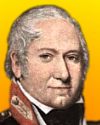 | TODAY IN SCIENCE HISTORY
NEWSLETTER - 13 MARCH |
 On 13 Mar 1781, William Herschel was using his telescope to examine small stars in the neighborhood of H Geminorum. He found what he surmised be a comet. After further days making measurements, he communicated his detailed results to the Royal Society. On 13 Mar 1781, William Herschel was using his telescope to examine small stars in the neighborhood of H Geminorum. He found what he surmised be a comet. After further days making measurements, he communicated his detailed results to the Royal Society.
It was later found to be something rather different, and more significant. He proposed the name Georgium Sidus for it.
What was it? You can read more, including some extracts from the original papers which began with his Account Of A Comet.
|

| "In completing one discovery we never fail to get an imperfect knowledge of others."
- Joseph Priestley, English chemist, clergyman and political theorist. (born 13 Mar 1733)  |
 | "Raising children is a creative endeavor, an art rather than a science." - Bruno Bettelheim, Austrian-American psychologist. (died 13 Mar 1990)  |

| "Nothing perhaps has so retarded the reception of the higher conclusions of Geology among men in general, as ... [the] instinctive parsimony of the human mind in matters where time is concerned."
- Charles Lapworth, English geologist. (born 9 Mar 1777)  |
| Before you look at today's web page, see if you can answer some of these questions about the events that happened on this day. Some of the names are very familiar. Others will likely stump you. Tickle your curiosity with these questions, then check your answers on today's web page. |
 |  An American astronomer, born 13 Mar 1855, predicted the existence of the planet Pluto and initiated the search that ended in its discovery. He was also passionately committed to finding proof of intelligent life on Mars. In 1894, he founded an Observatory, atop Mars Hill, at Flagstaff as Arizona's first astronomical observatory, which carries his name. An American astronomer, born 13 Mar 1855, predicted the existence of the planet Pluto and initiated the search that ended in its discovery. He was also passionately committed to finding proof of intelligent life on Mars. In 1894, he founded an Observatory, atop Mars Hill, at Flagstaff as Arizona's first astronomical observatory, which carries his name.  Can you name this scientist? Can you name this scientist? |
 |  Joseph Priestley, born 13 Mar 1733, was an English clergyman, political theorist, and physical scientist whose work contributed to advances in liberal political and religious thought and in experimental science. He is best remembered as one of the discoverers of one of the elemental gases, but he also discovered sulphur dioxide, silicon fluoride and ammonia, invented pneumatic trough. Joseph Priestley, born 13 Mar 1733, was an English clergyman, political theorist, and physical scientist whose work contributed to advances in liberal political and religious thought and in experimental science. He is best remembered as one of the discoverers of one of the elemental gases, but he also discovered sulphur dioxide, silicon fluoride and ammonia, invented pneumatic trough.  Which gaseous element did he discover? Which gaseous element did he discover?  |
 |  Robert Thorburn Ayton Innes (1861-1933) a Scottish astronomer who discovered in 1915, the closest star to earth (after the Sun). This is a faint star near the binary star Alpha Centauri, which is so far south it is not visible from most of the northern hemisphere. Robert Thorburn Ayton Innes (1861-1933) a Scottish astronomer who discovered in 1915, the closest star to earth (after the Sun). This is a faint star near the binary star Alpha Centauri, which is so far south it is not visible from most of the northern hemisphere.
 What is the name of the star Innes discovered? What is the name of the star Innes discovered? |
 |  An English army general (1761-1842) invented the shrapnel shell. Shrapnel projectiles contained small shot or spherical bullets, usually of lead, along with an explosive charge to scatter the shot as well as fragments of the shell casing. The resulting hail of high-velocity debris was often lethal; shrapnel caused the majority of wounds caused by artillery in WW I. An English army general (1761-1842) invented the shrapnel shell. Shrapnel projectiles contained small shot or spherical bullets, usually of lead, along with an explosive charge to scatter the shot as well as fragments of the shell casing. The resulting hail of high-velocity debris was often lethal; shrapnel caused the majority of wounds caused by artillery in WW I.  Can you name this inventor? Can you name this inventor? |
 |  On 13 Mar of a certain year, the discovery of a ninth planet was announced by Clyde W. Tombaugh. It is only one-tenth as large as Earth and four thousand million miles away. The planet was named Pluto On 13 Mar of a certain year, the discovery of a ninth planet was announced by Clyde W. Tombaugh. It is only one-tenth as large as Earth and four thousand million miles away. The planet was named Pluto  In what decade was Pluto first discovered? In what decade was Pluto first discovered?  |

|  On 13 Mar 1781, English astronomer William Herschel detected what he thought it was a comet. It was not a comet, but it was the first heavenly body of its kind to be discovered with the aid of a telescope. On 13 Mar 1781, English astronomer William Herschel detected what he thought it was a comet. It was not a comet, but it was the first heavenly body of its kind to be discovered with the aid of a telescope.  What had Herschel first sighted of its kind with his telescope? What had Herschel first sighted of its kind with his telescope?  |
When you have your answers ready to all the questions above, you'll find all the information to check them, and more, on the March 13 web page of Today in Science History. Or, try this link first for just the brief answers.
Fast answers for the previous newsletter for March 12: coal tar; crystal structures; George Westinghouse; Coca-Cola; copper. |
 If you enjoy this newsletter, the website, or wish to offer encouragement or ideas, please send feedback by using your mail reader Reply button. If you enjoy this newsletter, the website, or wish to offer encouragement or ideas, please send feedback by using your mail reader Reply button. |
--
If you do not want to receive any more newsletters,
Unsubscribe To update your preferences and to unsubscribe visit
this link 


 On 13 Mar 1781, William Herschel was using his telescope to examine small stars in the neighborhood of H Geminorum. He found what he surmised be a comet. After further days making measurements, he communicated his detailed results to the Royal Society.
On 13 Mar 1781, William Herschel was using his telescope to examine small stars in the neighborhood of H Geminorum. He found what he surmised be a comet. After further days making measurements, he communicated his detailed results to the Royal Society.
















0 comments:
Post a Comment